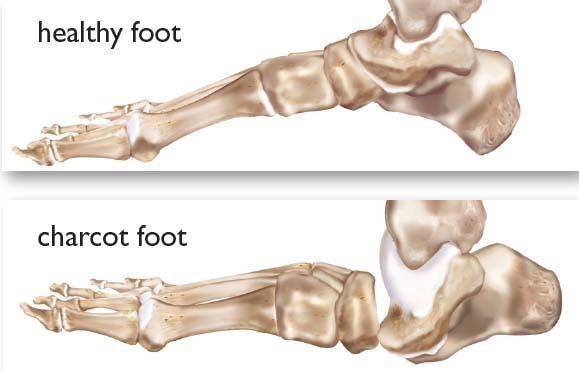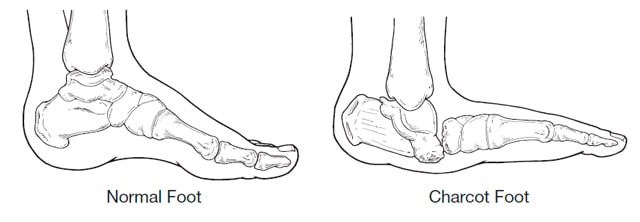Constant high blood glucose levels lead to diabetes, which, in turn, cause many health complications if left untreated. Some of the common health problems among diabetics with poor diabetes management affect the feet.
There are two major causes of diabetes foot problems: poor circulation and nerve damage. One of the most dangerous problems is Charcot foot – a deformity that can lead to disability.
That’s why regular foot check is crucial for people with diabetes. They can prevent it if they notice the first warning signs of this critical foot condition.
What Causes Charcot Foot
Charcot arthropathy is a fracture or dislocation of joints or bones in the foot. One of the many diabetes complications is nerve damage, which means a person can lose the sensation in their feet.
So, these people might not notice they have a blister or irritated skin on their foot, which can quickly progress into something more serious. In fact, it may take a few days for a small blister to progress into a dangerous infection.
What’s more, diabetes can cause blood vessel damage, reducing blood circulation to the feet. Poor blood flow can weaken the bones, causing bone and joint disintegration in the ankle and foot.
That’s why those with diabetes have a higher risk of fracturing a bone in the foot.
People with diabetes who have nerve damage may not even realize they have a broken bone in the foot. So, they will continue walking, causing more severe joint dislocations and fractures on the injured foot.
What’s more, the edges of a fractured bone could cause chronic foot sores due to the excess pressure, pointing downward toward the ground.
Bone disintegration together with trauma can twist and deform the shape of the foot, causing Charcot arthropathy.
Symptoms of Charcot Foot
A person with Charcot’s foot may not necessarily feel great pain, but they have the following symptoms:
- Redness in the foot
- Warmth (the affected foot is warmer than the healthy one)
- Pain or soreness
- Swelling in the area
In case you notice these signs, visit your doctor immediately. But, make sure you don’t step on your affected foot to prevent further damage.
Treatment
The goal of the Charcot arthropathy treatment is to prevent further joint destruction and bone deformity by healing the broken bone. There are two types of treatment: surgical and non-surgical.
Surgical Treatment
Unstable dislocations and fractures, as well as increased risk for ulcers, require surgical treatment. Also, surgery is recommended if the non-surgical treatment has been unsuccessful.
Non-Surgical Treatment
Non-surgical treatment of Charcot’s foot can use casting or custom shoes.
- Casting – cast or cast boot is used for the early stages of Charcot arthropathy. It protects the bones in the ankle and foot and reduces swelling. However, you should change it every week to fit the size of your foot which will change because of the swelling.
- Custom Shoes – once the bones start to fuse back together and the swelling reduces, your doctor may recommend a specialized diabetic shoe or custom walking boot. The boot reduces the risk of ulcers.
Conclusion
The best way to prevent Charcot’s foot is to check your feet every day for possible signs. Also, don’t forget to control your blood glucose levels by taking your prescribed therapy, and consuming healthier, low GI foods.


